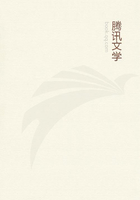"The space which separates the first fortress from the second,and up to the third fortress,is filled with cultivated fields and with houses and gardens.In the space from the third to the seventh one meets a numberless crowd of people,many shops,and a bazaar.By the king's palace are four bazaars,placed opposite each other.On the north is the portico of the palace of the RAI.Above each bazaar is a lofty arcade with a magnificent gallery,but the audience-hall of the king's palace is elevated above all the rest.The bazaars are extremely long and broad.[135]
"Roses are sold everywhere.These people could not live without roses,and they look upon them as quite as necessary as food....Each class of men belonging to each profession has shops contiguous the one to the other;the jewellers sell publicly in the bazaars pearls,rubies,emeralds,and diamonds.In this agreeable locality,as well as in the king's palace,one sees numerous running streams and canals formed of chiselled stone,polished and smooth.[136]
"On the left of the Sultan's portico rises the DEWAN KHANEH,[137]which is extremely large and looks like a palace.In front of it is a hall,the height of which is above the stature of a man,its length thirty ghez and its breadth ten.[138]In it is placed the DEFTER-KHANEH (court-house),and here sit the scribes....In the middle of this palace,upon an high estrade,is seated an eunuch called the Danaik,[139]who alone presides over the divan.At the end of the hall stand chobdars[140]drawn up in line.The Dewan or Danaik settles people's affairs and hears their petitions.There is no appeal.After concluding business the Danaik passes through seven doors into the palace,and entering the last alone,makes his report to the king.
"Behind the king's palace[141]are the house and hall allotted to the Danaik.To the left of the said palace is the Mint.
"This empire contains so great a population that it would be impossible to give an idea of it without entering into extensive details.In the king's palace are several cells,like basins,filled with bullion,forming one mass."Opposite the DIVAN-KHANEH,he continues,is the house of the elephants.
"Each elephant has a separate compartment,the walls of which are extremely solid,and the roof composed of strong pieces of wood....Opposite the Mint is the house of the Governor,where are stationed twelve thousand soldiers on guard....Behind the Mint is a sort of bazaar,which is more than three hundred ghez in length,and more than twenty in breadth.[142]On two sides are ranged houses and forecourts;in front of them are erected,instead of benches (KURSI),several lofty seats constructed of beautiful stones.On the two sides of the avenue formed by the chambers are represented figures of lions,panthers,tigers,and other animals.[143]Thrones and chairs are placed on the platforms,and the courtesans seat themselves thereon,bedecked in gems and fine raiment."The author took up his abode in a lofty house which had been allotted to him,on the 1st Muharram (May 1,1443)"One day some messengers sent from the palace of the king came to see me,and at the close of the same day I presented myself at court....The prince was seated in a hall,surrounded by the most imposing attributes of state.Right and left of him stood a numerous crowd of men arranged in a circle.The king was dressed in a robe of green satin,around his neck he wore a collar,composed of pearls of beautiful water,and other splendid gems.He had an olive complexion,his frame was thin,and he was rather tall;on his cheeks might be seen a slight down,hut there was no beard on his chin.The expression of his countenance was extremely pleasing.[144]...















